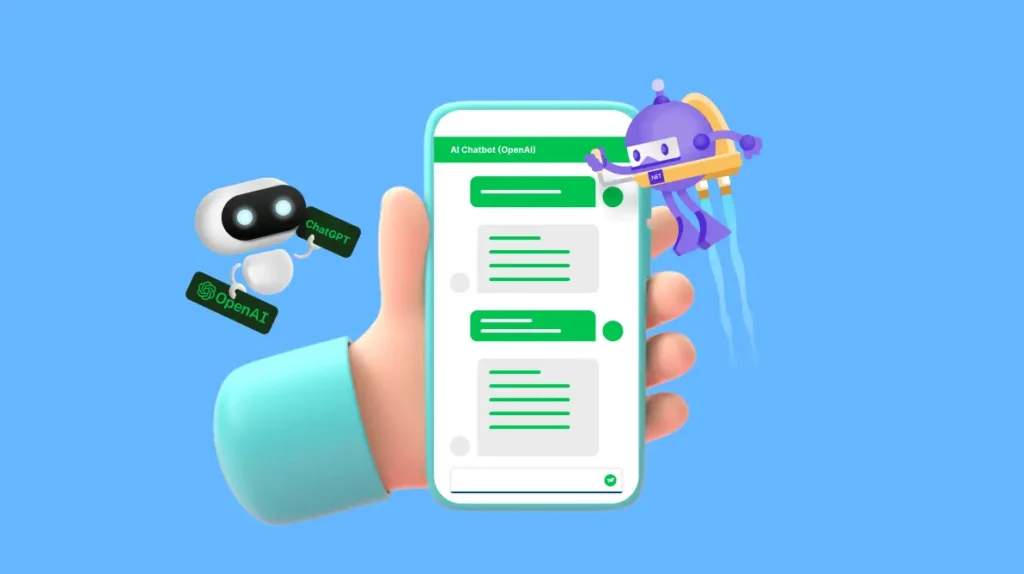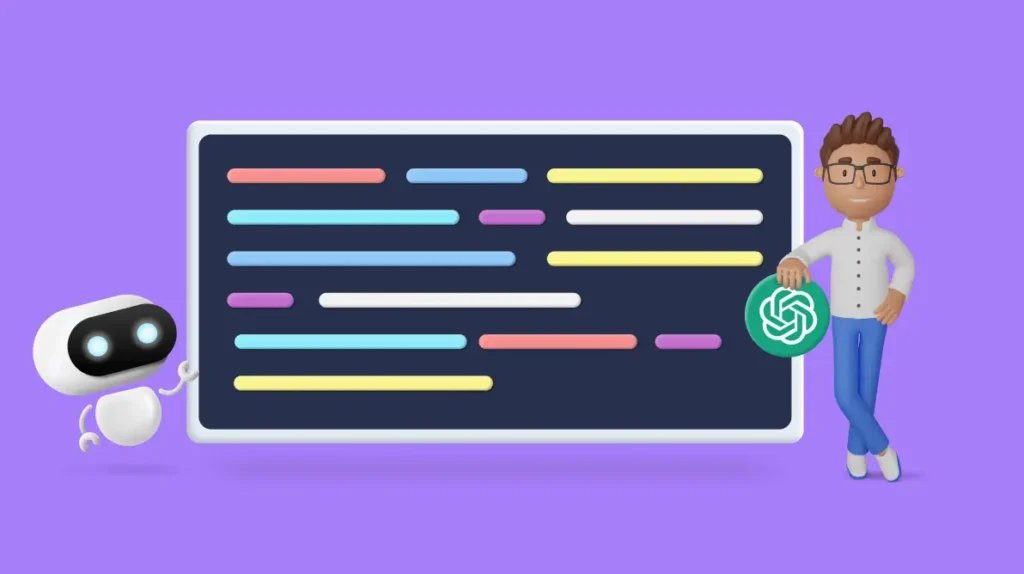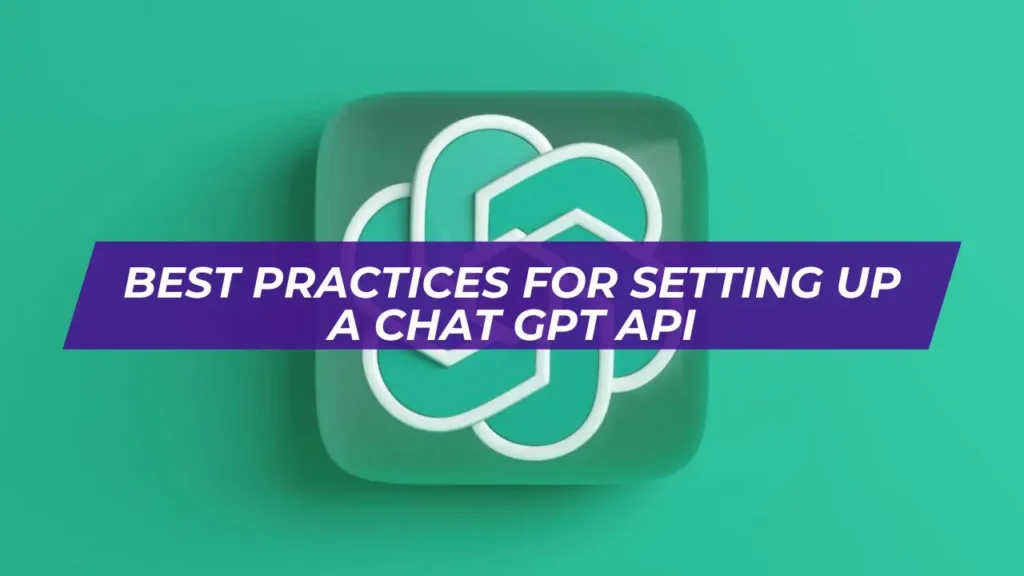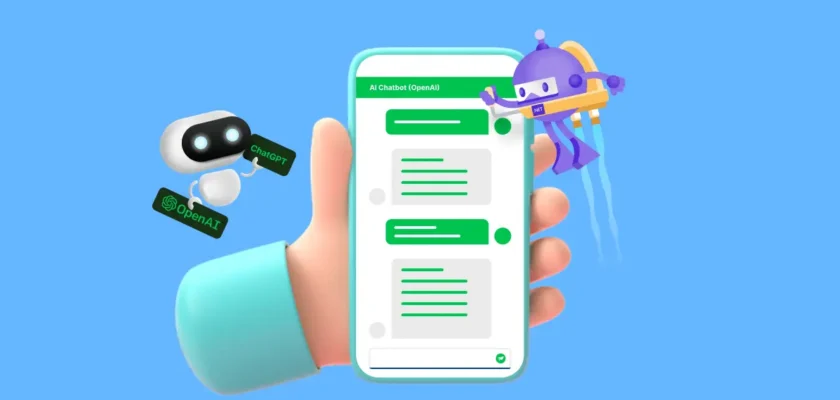Building Chat Applications with ChatGPT
In the realm of artificial intelligence (AI), ChatGPT has emerged as a powerful tool for building chat applications that facilitate natural language interactions between users and machines. Developers harness the capabilities of ChatGPT to create immersive chat experiences across various domains, from customer service bots to language translation tools and virtual assistants.

Leveraging Natural Language Processing
ChatGPT leverages advanced natural language processing (NLP) techniques to understand and generate human-like text responses. By analyzing large volumes of text data, the model learns patterns, semantics, and context, enabling it to generate coherent and contextually relevant responses in conversational settings.
Integrating ChatGPT into Applications
The integration of ChatGPT into chat applications involves incorporating its API (Application Programming Interface) into the software architecture. Developers can access ChatGPT’s capabilities through API endpoints, allowing them to interact with the model for tasks such as text generation, conversation management, and sentiment analysis.
Enabling Conversational AI
Building chat applications with ChatGPT enables developers to create conversational AI agents that can engage users in meaningful dialogue. These agents can understand user queries, provide relevant information, and perform tasks based on natural language inputs, offering a seamless and intuitive user experience.
Enhancing User Engagement
By leveraging ChatGPT’s conversational abilities, developers can enhance user engagement and satisfaction within chat applications. The model’s ability to generate human-like responses fosters more interactive and engaging conversations, leading to improved user retention and satisfaction.
Customizing Chat Experiences
Developers have the flexibility to customize chat experiences by fine-tuning ChatGPT’s responses to align with specific use cases and user preferences. Through training and optimization, developers can tailor the model’s behavior to suit the requirements of diverse applications, ensuring a personalized and contextually relevant user experience.
Empowering Innovation
The integration of ChatGPT into chat applications empowers developers to innovate and explore new possibilities in AI-driven communication. By combining ChatGPT’s capabilities with creative design and user-centric development practices, developers can push the boundaries of what’s possible in conversational AI, driving innovation and differentiation in the marketplace.
In conclusion, building chat applications with ChatGPT opens doors to a world of possibilities in AI-driven communication. By leveraging the model’s advanced NLP capabilities, integrating its API into applications, and customizing chat experiences, developers can create immersive and engaging chat applications that redefine human-machine interaction.
Integrating ChatGPT into Software
The integration of ChatGPT into software applications marks a significant leap forward in the realm of artificial intelligence and natural language processing. By embedding ChatGPT’s capabilities within software architectures, developers can unlock a myriad of possibilities for enhancing user experiences, automating tasks, and enabling intelligent interactions.

Seamless API Integration
One of the key aspects of integrating ChatGPT into software is the seamless integration of its API (Application Programming Interface). The API serves as a bridge between the software application and ChatGPT’s underlying model, enabling developers to access its language processing capabilities programmatically. Through API integration, developers can incorporate features such as text generation, conversation management, and sentiment analysis into their software applications with ease.
Flexible Deployment Options
ChatGPT offers flexible deployment options, allowing developers to integrate the model into various types of software environments. Whether it’s web-based applications, mobile apps, desktop software, or backend systems, developers can deploy ChatGPT to suit their specific use cases and infrastructure requirements. This flexibility ensures that ChatGPT can seamlessly integrate into existing software ecosystems, regardless of the platform or technology stack.
Extensible Functionality
Integrating ChatGPT into software opens up a world of extensible functionality and capabilities. Developers can leverage the model’s natural language processing capabilities to enhance user interactions, automate repetitive tasks, and provide intelligent assistance within software applications. From chatbots and virtual assistants to content generation tools and language translation services, ChatGPT’s extensible functionality enables a wide range of applications across diverse domains.
Enhanced User Experiences
By integrating ChatGPT into software applications, developers can deliver enhanced user experiences that prioritize natural and intuitive interactions. The model’s ability to understand and generate human-like text responses enables software applications to communicate with users in a more conversational and empathetic manner. This leads to increased user engagement, satisfaction, and retention, ultimately contributing to the success of the software product.
Personalized Solutions
Integrating ChatGPT into software allows developers to create personalized solutions that cater to individual user needs and preferences. By fine-tuning the model’s responses and behaviors, developers can tailor the software application to deliver customized experiences that resonate with users on a personal level. Whether it’s providing personalized recommendations, answering user queries, or offering contextually relevant information, ChatGPT-powered software solutions can adapt to the unique preferences of each user.
Continuous Improvement
Integrating ChatGPT into software is not just a one-time implementation but an ongoing journey of continuous improvement and optimization. Developers can leverage feedback mechanisms and data-driven insights to iteratively refine and enhance the model’s performance within the software application. By monitoring user interactions, analyzing usage patterns, and incorporating user feedback, developers can ensure that ChatGPT-powered software solutions evolve and improve over time, delivering greater value to users with each iteration.
In conclusion, integrating ChatGPT into software applications represents a paradigm shift in how we interact with technology. By seamlessly embedding ChatGPT’s natural language processing capabilities into software architectures, developers can create intelligent, intuitive, and personalized solutions that elevate the user experience to new heights. Whether it’s enhancing communication, automating tasks, or providing intelligent assistance, ChatGPT-powered software applications have the potential to revolutionize the way we engage with technology in the digital age.
API Integration and Best Practices
API integration is a pivotal aspect of incorporating ChatGPT’s capabilities into software applications, offering developers a gateway to harness its language processing prowess effectively. Here’s a detailed exploration of API integration best practices and considerations for optimizing the integration process:

1. Comprehensive Documentation
Prior to API integration, developers should familiarize themselves with ChatGPT’s API documentation, which outlines its functionalities, endpoints, request parameters, and response formats. Comprehensive documentation serves as a roadmap for seamless integration, providing clarity on how to interact with the API and leverage its features effectively.
2. Authentication and Security
Implementing robust authentication mechanisms is paramount to ensure the security and integrity of API interactions. Developers should utilize secure authentication methods such as API keys, OAuth tokens, or JSON Web Tokens (JWT) to authenticate requests and prevent unauthorized access. Additionally, encryption techniques such as HTTPS should be employed to encrypt data transmitted between the software application and ChatGPT’s servers, safeguarding sensitive information from potential threats.
3. Rate Limiting and Throttling
To prevent abuse and ensure fair usage of resources, API integration should incorporate rate limiting and throttling mechanisms. Developers should adhere to ChatGPT’s rate limits and usage quotas to avoid exceeding predefined thresholds, which may result in degraded performance or temporary suspension of API access. Implementing rate limiting strategies and backoff mechanisms helps regulate API usage, ensuring equitable access for all users while maintaining system stability.
4. Error Handling and Resilience
Effective error handling is essential to mitigate potential failures and ensure graceful degradation in the event of API errors or service disruptions. Developers should implement robust error handling mechanisms to intercept and handle various types of errors, such as network timeouts, server errors, or invalid requests. Additionally, incorporating retry logic and exponential backoff strategies enables the software application to recover gracefully from transient errors and maintain operational resilience.
5. Data Privacy and Compliance
Maintaining compliance with data privacy regulations and industry standards is imperative when integrating ChatGPT’s API into software applications. Developers should adhere to relevant data protection laws, such as the General Data Protection Regulation (GDPR) or the California Consumer Privacy Act (CCPA), to safeguard user data and privacy rights. Implementing data anonymization techniques, encryption protocols, and secure data transmission practices helps uphold data privacy principles and ensures regulatory compliance.
6. Monitoring and Analytics
Continuous monitoring and analytics are essential for optimizing API integration performance and identifying potential bottlenecks or issues. Developers should leverage monitoring tools and analytics platforms to track API usage, latency, error rates, and other key performance indicators (KPIs). Real-time monitoring enables proactive detection of anomalies or performance degradation, facilitating timely intervention and optimization to maintain optimal API performance and user experience.
7. Versioning and Deprecation Policies
As ChatGPT’s API evolves over time, developers should adhere to versioning and deprecation policies to manage API changes effectively. Adopting versioning strategies such as semantic versioning (SemVer) helps maintain compatibility with existing integrations while introducing new features or enhancements. Additionally, developers should stay informed about API deprecation schedules and migration paths to ensure seamless transition to newer API versions and mitigate potential disruptions to software applications.
8. Documentation and Developer Support
Providing comprehensive documentation and developer support resources is essential to facilitate smooth API integration and empower developers with the knowledge and tools they need. Developers should create detailed API documentation, code samples, and tutorials to guide users through the integration process and troubleshoot common issues effectively. Additionally, offering developer forums, community support channels, and dedicated developer advocates enhances the overall developer experience and fosters collaboration and knowledge sharing within the developer community.
In summary, API integration with ChatGPT entails careful consideration of best practices and principles to ensure seamless integration, optimal performance, and a superior user experience. By adhering to best practices such as comprehensive documentation, robust security measures, effective error handling, and continuous monitoring, developers can maximize the value of ChatGPT’s API and unlock its full potential within their software applications.
Dive into the Well of your Thoughts and Let’s Paint our Digital Canvas Together! ️
Your Musings, Questions, or Simple Hellos are the Strokes that Shape our Shared Narrative. ✨ Click “Contact Me” to Contribute, and Don’t Forget to Leave a Comment Below!
Until our Next Masterpiece, Keep Reading! ✨
– Sudhir Soni

